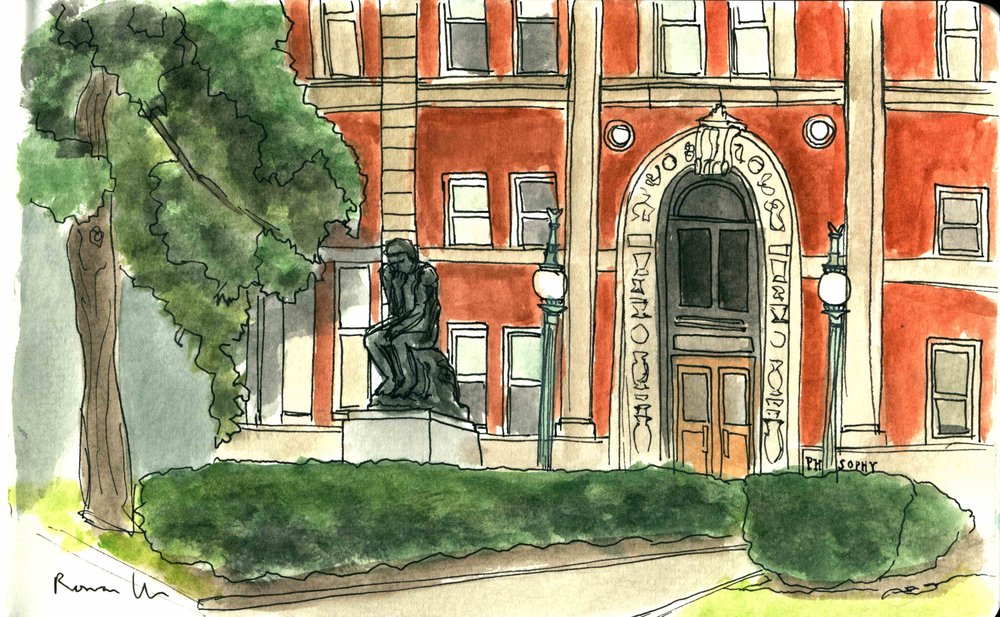Get Real with Carla Stockton
—
Fifteen minutes after the curtain went up on the current production of The King and I at Lincoln Center, I could feel myself sighing. So many things were wrong with the show, and I was quickly losing interest. By the time she began singing “Getting to Know You” with the palace children in the middle of Act I, I wanted to shout, “I know you already. I do. Please surprise me for a change.”

I realize that I’m on shaky ground here, that the critics have lauded the show, that it has been showered with every kind of prestigious largesse available to a Broadway show. But I was bored. And the show disappointed me terribly.
The opening moment with the arrival of the ship in the harbor was spectacular, and as the boat filled the extended thrust stage, I was breathless, expectant of some new staging, a new way of seeing this old play without the tyranny of the proscenium enforcing the fourth wall. I had a good seat, on the right side of the house, in front of Stage Left, and I expected that for me and the rest of the audience there would be no passive stupor, as we found ourselves engaged, being inspired to think critically, to have creative thoughts around the issues raised.
But by the end of the first fifteen minutes, I could see how wrong my expectations were. The opening number – the lovely-voiced Kelly O’Hara singing “Whenever I feel Afraid” to her son Louis (Jake Lucas) – was crowded onto a minute portion of the stage while the vast depths of possibility extending to the wings, mostly invisible from where I was sitting, were left empty and unplumbed. The number was awkward, static, slow, and it set the pace for the rest of the show.
I had memorized the 1951 production, starring Gertrude Lawrence, which I saw with my mother in 1954, after Lawrence had been replaced by Constance Carpenter, and just before the show closed. That one was replicated in the 1956 film, starring Deborah Kerr singing with Marnie Nixon’s voice. When I was 16, because I wanted to be Anna Leonowens, the protagonist of the play, I got permission from the Rogers & Hammerstein Library to mount a production in the basement of the Methodist Church. We were deeply into rehearsals before the actor I had cast as the King dropped out, and no replacement was available.
We scrapped the production, but ever after, when I was angry at my parents, I would lock myself in my bedroom and act out every moment of “Shall I tell you what I think of you,” with all the insults and angry kowtowing, shouting at my own personal image of the king, who had my father’s blue eyes and my mother’s curly brown hair. Imagine my disappointment when there on the stage at Lincoln Center, when Kelly O’Hara executed the number exactly as I had seen both Constance Carpenter and Deborah Kerr execute it; nothing had been reinterpreted, nothing had been updated except perhaps the materials used to build the costumes and the set.
Which pretty much sums up my view of the entire production. Nothing was done to engage a 21st Century audience into a story that might have universal overtones but was solidified in its own period by the adherence to so much of the original production.
The sets, by Michael Yeargan, are as realistic as the original sets by the great Jo Mielziner; the costumes by Catherine Zuber are sumptuous enough to have been built by Irene Sharaff’s crew out of newly imported silks from Thailand. What is disturbing about both in this production is that the sets are underexploited in parts of the stage, overcrowded in others, and the costumes often overshadow the actors wearing them. Sadly, too, Director Bartlett Scher has failed to use his stage effectively.

The King’s throne room is so far upstage, much of it behind sight lines that are compromised by the enormous thrust, that anything played there is lost to audiences on the right or the left of center, which means that 2/3 of the audience cannot see what goes on there. Scher compensates by bringing the action downstage, forcing many players into too small a space and leaving vast recesses of the stage unused. The actors’ downstage crosses are unmotivated by any intention of their own, and they tend to seem out of place where they have been instructed to go. When on the thrust, which could be useful in bringing the audiences into the center of the action and could be a means of involving them in the play, the actors perform entirely to the center of the audience, neglecting to speak to the rest of us. The staging, like the choreography, seems a throwback to the work of director Jon Van Druten and choreographer Jerome Robbins. I expected more from Bartlett Scher, whose flair for innovation is usually apparent in his re-envisioning of classic works like South Pacific, Awake and Sing and others. But the lackluster staging and the re-cycled choreography were not what made me want to leap from my seat and ditch the second act. My overriding malaise came from my inability to sympathize with any of the central characters.

The King, played here by Hoon Lee, seemed to strut and fret what felt like hours and hours on that stage as though he were the second coming of Yul Brynner. He even affects an accent reminiscent of Brynner’s and winks at the assembled children at the same moments Brynner does in the film version; he sighs with the same punctuation. I didn’t mind the replication; Lee’s work is more layered than Brynner’s, and Lee has found nuances that tease us with the hope that this King will have more depth to his bluster. But there was ultimately no new light shed on this character, no new insights as to why he acts as he does, why his followers are devoted to him, why his women adore him.
What I found most appalling was the misogyny at the base of the play, misogyny not only in the Court of the King of Siam but in the choices and the interpretations Scher and his actors offer up.
I’m not one to favor the use of euphemisms where the truth will do, but I am shocked that the political correctness police have not attacked this show. It is rife with Asian diminutions, though those have been somewhat reduced from the original productions; what is shocking is how little has been done to disempower the antifeminism.
Anna seemed to me the bastion of feminism in 1964, when I was 16, but today I wince at my naïveté in admiring her. Yes, she defies the King in the privacy of her bedroom, calls him conceited and indulgent when he is out of earshot. But in his presence, she acquiesces to his every whim, even ceases complaining when it is clear Tuptim will be put to death for her “crime” of running off with her temple priest lover. While Anna’s the heroine of the story, perhaps the most popular show stopping number belongs to Lady Thiang (Ruth Ann Miles), the King’s Head Wife. “Something Wonderful,” which Miles sings to perfection, extols the virtues of standing by her abusive husband – rather like “What’s the Use of Wondering” in Carousel, sung in defense of a wife beater – and of living to serve him. “A man who needs your love can be wonderful.”

Anna Leonowens gets her way on some of the things she requires by acting in a singularly stereotypically bitchy female way, by throwing tantrums and pouting. She never appropriates any real agency. All the other women are mere puppets, one-dimensional reflections of whatever their men allow them to be. There are layers in the character of Tuptim, the ill-fated concubine, that might have been fleshed out in her acting, in her staging, in her dramatic choices, but instead she remains the same victimized ingénue she was in 1951. By now she should know better. She can’t change her fate, but she doesn’t have to be as complicit as this actress makes her. Some of this might have been exacerbated by the fact that Tuptim was being played by an understudy the night I saw the show, and while the actress sang stupendously, her acting was amateurish.
In the end, it is Anna’s character that remains most stupefying. After Leonowens’ death, new facts about her came to life, and in 2009, biographer Susan Morgan created, in her book Bombay Anna (University of California Press, 2009), a far more interesting, believable character than the one seen here on stage.
A gifted con artist, the real governess to the children of Monkut, King of Siam, was the daughter of an Indian mother and a British enlisted man, but she convinced the world that she was the Welsh daughter of a ranking officer. When she was hired to work in Monkut’s palace, she advertised herself as a younger version of herself, one who had little blonde children though both were teenaged brunettes. She brought English to the Thai court without resorting to Christian proseltyzing, which Monkut despised, and the work she did as the king’s secretary cast her in a critical role in the King’s resistance of colonial France and Great Britain, who had subsumed neighboring countries. The real Anna even wrote two books about her experiences in Siam, one about the inner life of the harem and the other, The English Governess at the Siamese Court, an erstwhile memoir of her years at court, the book on which Margaret Landon’s novel Anna and the King of Siam, the original material for The King and I, was based.
None of this finds its way into the character we see on stage, and despite Kelly O’Hara’s phenomenal voice and spritely presence, the old Anna, 1951 Anna, is far less compelling than she deserves to be in 2015.
—
 Carla Stockton, MFA candidate in Creative Nonfiction and Literary Translation. She is the mother of three, grandmother of two, writer, theater director, filmmaker, teacher and vegan traveler.
Carla Stockton, MFA candidate in Creative Nonfiction and Literary Translation. She is the mother of three, grandmother of two, writer, theater director, filmmaker, teacher and vegan traveler.




